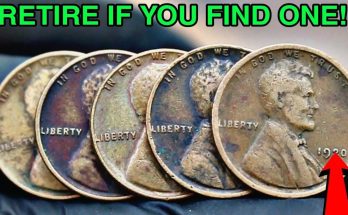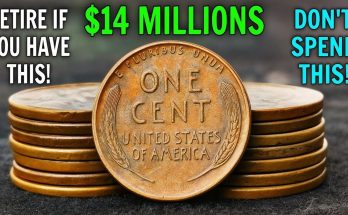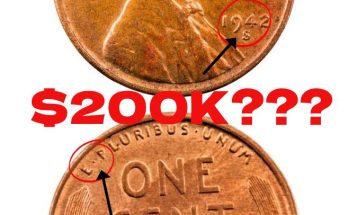“A fascinating find! This 1943 Lincoln Cent, with its unusual silver color, is a unique piece of American history. It’s a great example of a coin that tells a story far beyond its face value.”
The Silver Penny: A Unique Chapter in American Coinage
The striking image of a seemingly “silver” penny with the date 1943 is a testament to one of the most unusual and captivating periods in American numismatic history. The caption, “Found this today, never seen a silver colored penny before,” captures the exact moment of discovery that has intrigued countless people over the decades. This coin is not made of silver, but rather steel, a direct result of the United States’ efforts during a time of immense national crisis: World War II.
In 1943, the U.S. Mint was faced with a critical problem. Copper, the metal used to make pennies since 1793, was urgently needed for the war effort, primarily for shell casings, wiring, and other military equipment. The demand for copper was so high that it was deemed a strategic material. To conserve this vital resource, the U.S. Treasury made a historic decision to change the composition of the one-cent coin. For the entire year of 1943, pennies were struck from a new material: a low-carbon steel planchet that was coated with a thin layer of zinc. This new composition gave the pennies their distinctive silvery-gray color, a stark contrast to the familiar reddish-brown copper cents that had been in circulation for over a century.
The 1943 Steel Cent, also known as the “Steelie,” was an immediate anomaly. Its color made it stand out from other pennies, and it was often mistaken for a dime or was simply rejected by vending machines that were calibrated to the weight and composition of copper coins. While it served its purpose of saving thousands of tons of copper for the war, the new coin was not popular. In 1944, the U.S. Mint reverted to using a modified brass alloy that included copper, with the metal sourced from recycled spent ammunition shells, ensuring that the wartime effort could continue without sacrificing the coin’s public acceptance.
While the vast majority of the 1.1 billion 1943 steel cents produced are very common and worth only a small amount today, their unique composition and historical context make them a fascinating piece for collectors and a popular starting point for new numismatists. Their value is tied to their condition, with a perfectly preserved, uncirculated “Steelie” fetching a small premium.
However, the real excitement around the 1943 penny lies in a legendary and incredibly rare error. A small number of bronze planchets from 1942 were accidentally fed into the presses at the Philadelphia, Denver, and San Francisco mints in 1943. These 1943 bronze/copper pennies, struck in error, were not part of the standard production run and are among the rarest and most valuable coins in U.S. history. Their value is in the hundreds of thousands of dollars, with one of the most famous examples, a 1943-D, selling for over $1.7 million. The best way to identify one of these priceless errors is with a simple magnet test: the common steel version will stick to a magnet, while the rare copper version will not.
This “silver-colored penny,” then, is more than just a piece of currency. It is a tangible link to a pivotal moment in American history, a small but powerful reminder of the nation’s resourcefulness and sacrifice during a time of global conflict. It’s a coin that invites a story, a conversation about its unique past, and a reminder that sometimes, the most common objects can hold the most compelling secrets. For any new coin enthusiast, finding a 1943 steel cent is the first step on a journey into the rich and rewarding world of numismatics.



